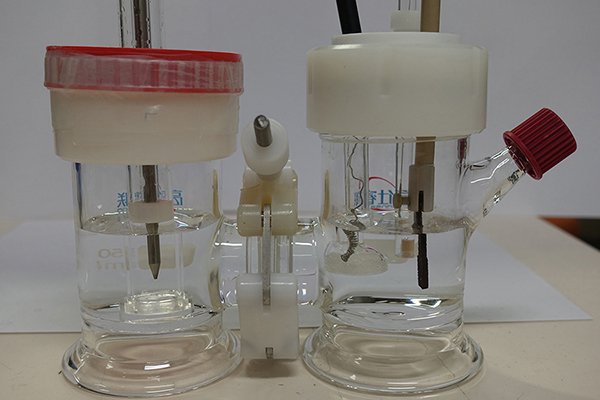Hydrogen technologies are quickly progressing in terms of their commercial availability and potential to reduce emissions across several industries. Developing these technologies and utilising renewable energies for hydrogen production is crucial to reaching climate change mitigation targets and decreasing our reliance on fossil fuels. This blog article reviews the present status of innovation in hydrogen technology and looks at some of the most recent breakthroughs in this subject.
Hydrogen production technology has advanced to the point that low-emission hydrogen may be produced using commercially available alkaline and PEM electrolysers. Solid oxide electrolysers (SOEC) are at the demonstration stage, whereas anion exchange membrane (AEM) electrolysers are in the early phases of development. Nevertheless, AEM technology is fast improving, with Enapter and Alchemr both having prototypes at the kilowatt scale, with Enapter aiming to build them at scale by 2023.
Advancement in hydrogen technology is also crucial for easing international hydrogen commerce. A key milestone in the development of hydrogen technology for international transport has just occurred. The Suiso Frontier, a liquefied hydrogen tanker designed by Kawasaki Heavy Industries, conducted the first hydrogen cargo between Australia and Japan in February 2022. Because of the lower technological maturity of liquefied hydrogen transportation and the LOHC conversion process, marine hydrogen commerce is projected to begin using ammonia as the carrier. Certain end-users will be able to consume ammonia directly, while others will need to turn ammonia back into hydrogen, which now has an energy cost of more than 30%.
To solve this problem, the European Commission sponsored Ammonia to Green Hydrogen: Efficient system for ammonia cracking for long-distance transportation as part of the Horizon Europe Framework Project in April 2022. Its purpose is to develop catalysts and reactors for ammonia dehydrogenation at lower temperatures to the demonstration stage, achieve ammonia conversions of 98%, and increase the overall thermal efficiency of the conversion process while avoiding a catalyst reliant on crucial raw materials.
Hydrogen technologies have also made tremendous advances in the transportation industry over the previous year. Although fuel cells remain the primary technology for hydrogen usage in road transportation, the internal combustion engine (ICE) has gained traction. There were also major advancements in infrastructure for refuelling fuel cell heavy-duty vehicles, particularly for high-pressure (700 bar) and high-throughput refuelling facilities. For example, a project funded by the US Department of Energy and developed by the US National Renewable Energy Laboratory, Air Liquide, Honda, Shell, and Toyota built a hydrogen refuelling station for heavy-duty trucks that exceeded the US DOE target for flow rates, reaching an average mass flow rate of 14 kg/minute. In September 2022, Air Liquide will begin operating the first high-pressure hydrogen refuelling station for trucks in Europe as part of the H2Haul project in France. The nozzle restricting hydrogen flow into the vehicles is the technical hurdle for commercialisation, but new nozzle designs will likely be available in the next several years. In aviation, ZeroAvia designed and successfully ground tested a 600 kW hydrogen-electric aircraft engine in 2022.
Regarding fossil fuel-based hydrogen, throughout the previous year, there has been no substantial advance in technology development to create hydrogen from fossil fuels using CCUS. While partial CO2 capture systems (about 60%) are commercially available and widely employed in the co-production of ammonia and urea, greater capture rates have yet to be shown on a significant scale. The separate components to make hydrogen and absorb CO2 at high rates are established technologies. Still, there has yet to be an industrial scale demonstration that combines the production technologies with high capture rates, and no near-term initiatives have been identified.
In my opinion, there is an urgent need for additional research and development of renewable energy technology, notably in the generation and consumption of hydrogen. Universities and businesses must continue collaborating to develop practical and feasible plans for integrating these technologies into larger infrastructure, regulating their use, and raising societal awareness of their benefits.
Although substantial progress has been made in the generation of green hydrogen, this progress must be coordinated with infrastructure development for its use. Moreover, the optimum technique to use green hydrogen must be determined, whether it is for ammonia synthesis, fuel cells, or other viable possibilities.
It is critical to avoid a hydrogen “sugar rush,” in which the technology is hyped up but fades away due to a lack of a practical plan for implementation and utilisation. This needs cooperation between academics, politicians, and industry leaders to guarantee that renewable energy technology is appropriately incorporated into our infrastructure to advance sustainability and create a brighter future for our world.
In conclusion, continued investment in renewable energy research and development, particularly in the production and utilisation of hydrogen, is critical for a sustainable future. Nevertheless, to maximise the advantages of these technologies and guarantee their long-term success, this must be complemented with intelligent planning and infrastructure development.
Taking the forefront in the movement towards a sustainable energy future through the implementation of eco-friendly ammonia and hydrogen solutions.
